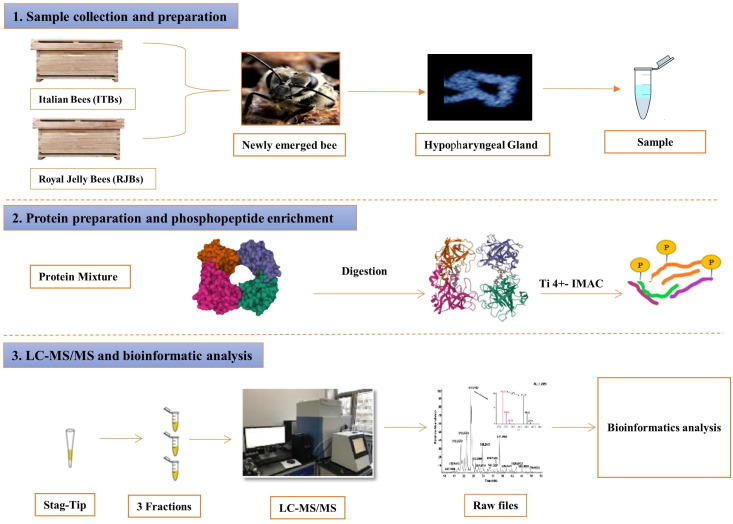A study revealing phosphorylation modification in hypopharyngeal gland of newly emerged honey bees
Date:2022-10-27
The Institute of Apicultural Research of Chinese Academy of Agricultural Sciences (IARCAAS) recently worked with King Saud University in a preliminary analysis of the detailed process of phosphorylation in the hypopharyngeal gland, providing a theoretical basis for the in-depth understanding of the developmental biology of the hypopharyngeal gland and the studies of high royal jelly-yielding mechanisms. Relevant findings were published in the Journal of King Saud University.

Royal jelly, as the most important food for queen bees, is mainly produced in the hypopharyngeal gland of bee workers. At different ages of bee workers, the hypopharyngeal gland express genes and proteins that adapt to the corresponding physiological age. However, how the phosphorylation process regulates the development process of hypopharyngeal gland remains unclear. In this study, we measured acini of the hypopharyngeal gland and conducted a phosphoproteomic analysis of the hypopharyngeal glands of newly emerged bee workers. Phosphopeptides were enriched by using Ti4+-IMAC reagent, followed by protein identification by high-resolution mass spectrometry. Five findings indicated that the average acinar size of the hypopharyngeal gland of Apis mellifera liguatica (56.18±1.72 μm) was significantly higher than that of Italian honey bees (45.98±1.62 μm). A total of 1,576 phosphopeptides were identified in Apis mellifera liguatica, and 1,800 phosphorylated sites contained 525 phosphoproteins; while 746 phosphopeptides were identified in Italian honey bees, and 846 phosphorylated sites corresponded to 317 phosphoproteins. In newly emerged honey bees of both bee populations, most proteins were phosphorylated on one residue, followed by two and three residues. Moreover, in both bee species, serine phosphorylation was most obvious, followed by threonine and tyrosine. The protein metabolism process, the glycolytic process and the pre-translation formation were enriched only in Apis mellifera liguatica, whereas the protein translation, the peptide metabolism process and the elongation were enriched in Italian honey bees.
This study revealed the detailed process of phosphorylation during the development of the hypopharyngeal gland, providing a research basis for understanding the biological activity of newly emerged bees of the two bee populations during the development of hypopharyngeal gland.